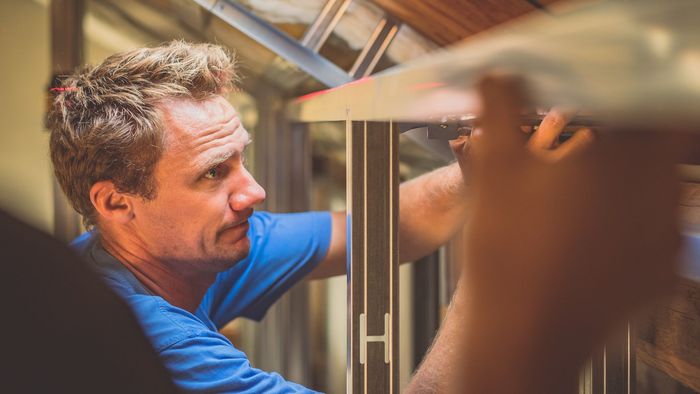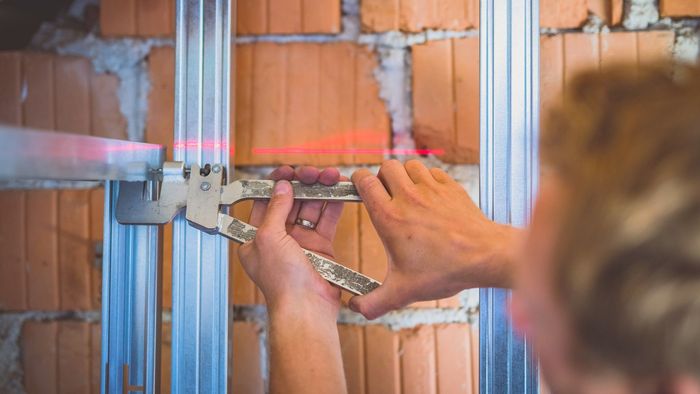Victoria Steel Stud Framing
Victoria Steel Stud Framing specializes in creating robust structures with steel studs, ideal for both commercial and residential projects. Our methods, experience, and safety measures ensure precision and timely project completion.
What Are Steel Studs?
Steel studs are crafted from galvanized steel, a material that offers resilience to corrosion, long-term strength, and durability. They’re available in various sizes to meet the needs of buildings with different wall heights and widths.
While steel stud framing is still primarily used in commercial and non-residential structures, it’s becoming more and more prevalent in residential construction as well. Rather than heavy, complicated hardwood studs, lightweight steel studs frame the exterior and interior walls - providing superior strength, durability, and resistance to all external forces.

Benefits of Steel Studs
- Ensure uniformity and consistency in construction. This results in more accurate and plumb walls.
- There’s less chance of settling or warping with steel studs because they keep their dimensions and shape over time.
- Although steel studs require specialized tools for cutting and riveting, they’re lighter and easier to handle than wood studs. This may speed up construction.
- Thinner than wood studs, which may marginally increase building interior space.
- Steel framing over wood costs less than 1% when insurance is included in the cost comparison. They may cost less than wood framing due to lower insurance premiums for non-combustible construction materials, which can save building owners more than $100,000 in insurance premiums.
The Structural Integrity of Steel Studs
Why Choose Steel Stud Framing?
Resistance To Fire
Metal studs won't start fires like their wood counterparts because they aren't flammable. Many factors like the steel's thickness, the coating or treatment type, and the structure's overall design determine the fire resistance of steel studs.
Gypsum or fire-resistant coatings can be sprayed onto steel studs to increase fire resistance. Additionally, stud spacing and wall insulation could affect fire resistance.
When meeting fire safety standards, consulting a skilled engineer or contractor knowledgeable of fire-resistant construction practices is best. Key aspects include careful stud wall and load-bearing walls construction, proper use of plastic ties, wood blocking, and top plates for structural integrity.
Additionally, maintaining access, installing doors correctly, aligning plates to avoid twist or flange issues, and checking for any gap are important for safety and performance.
Resistance to Rot, Termite, and Mould
- Rot-resistant. Since steel is inherently inorganic, rot-causing fungi and bacteria can’t feed on steel. Even in moist conditions, steel studs won't decay.
- Termite-resistant. Wood cellulose attracts termites. Since steel is metal, termites can’t infest them. This can be especially helpful in places where termites are prevalent.
- Mould-resistant. Organic ingredients and moisture promote mould growth. Mould doesn't develop on steel studs since its main components don't contain organic substances. Proper ventilation and moisture management are still needed since mould can form on other materials near steel.
Resistance to Moisture
Steel studs are moisture-resistant due to the material's inherent properties and regular manufacturing and treatment processes. Studs constructed of galvanized steel are resistant to rust and corrosion because of the zinc coating. Coatings like this keep water and other liquids from penetrating the steel core.
Instead of absorbing moisture and expanding, steel is naturally non-porous. So, even if water gets on the surface of the steel studs, it won't be able to penetrate and ruin the structure.
Long-Term Cost Compared to Other Materials
| Steel Studs | Traditional Wood Studs | |
|---|---|---|
| Initial Cost | Cost more than wood studs | Cheaper but may need to be replaced more often. |
| Maintenance | Lasts long, with minimal maintenance. | Needs to be sealed, painted, or repaired every so often. |
| Life Expectancy | Extremely durable and usually doesn’t require replacement for the entire building's lifetime. | Lasts 20–30 years less than steel, depending on environmental conditions |
| Installation | Saves waste and labour expenses due to their precise proportions. | Installing is simple, but cutting and fitting may take longer. |
Environmental Impact of Steel Stud
Steel Framing Methods
Steel stud framing installation involves these key steps:
- Layout. Marking wall locations
- Install Track. Secure the bottom and top tracks to the floor and ceiling.
- Cut and Install Studs. Cut the steel studs to length and snap them into the tracks at regular intervals, securing them with screws.
- Plumb and Align. Ensure studs are straight and aligned using a level.
- Add Stability. Insert horizontal braces between studs for additional support.
- Frame Openings. Frame outdoor and window openings with studs.
- Run Services. Install electrical wiring and plumbing through pre-cut holes in the studs.
- Attach Drywall. Secure drywall to the studs with screws designed for steel framing.
- Finish. Tape, mud, and finish the drywall as needed.
Services We Offer
List of Services
-
Framing for Homes and BusinessesList Item 1
Residential buildings, such as townhouses, single-family homes, and apartment complexes, are one of our main specialties. When it comes to building solid, dependable frameworks, our team is the go-to expert.
Commercial sites, including warehouses, office buildings, and retail spaces, also utilize our framing services. Our experience guarantees the framing meets commercial construction by-laws and all requirements.
-
Exterior Walls and Interior PartitioningList Item 2
Our team is well-versed in designing and installing steel stud walls, ideal for separating rooms in residential buildings or office spaces.
Metal stud framing also supports external walls well in bad weather. A sturdy base for the building envelope can be achieved by having our business create outside walls utilizing steel studs.
-
Acoustic Walls & CeilingsList Item 3
Commercial spaces and multi-family houses are two types of buildings that require soundproofing. We can assist in reducing sound transmission between floors and rooms by installing acoustical framing using steel studs.
-
Custom Framing ServicesList Item 4
Every building project is different, so we offer customized steel stud framing. Regardless of the unique architectural details or difficult structural needs, our staff is well-equipped to provide quality frame solutions.
-
Repairs and Upgrades
Our metal framing services are available for new construction and renovation/retrofitting projects. Our crew can handle the framing needs if you’re renovating an old structure or giving an area fresh use.
-
Design and Consultation Services
If you’re planning a steel stud framing project, our engineering and consulting services can help you do it right. We collaborate closely with clients from the beginning to the end to meet their framing needs, so everything goes according to plan and within budget.
Industries We Serve
| Aspect | Commercial | Residential | Industrial |
|---|---|---|---|
| Construction Type | High-rise buildings, offices | Single-family homes, apartment complexes, townhouses, condo | Factories, warehouses |
| Structural Requirements | Heavy-duty for load-bearing | Load-bearing, non-load-bearing | Load-bearing, heavy-duty |
| Design Flexibility | Customizable for various layouts | Adaptable to diverse architectural styles | Standardized for specific functions |
| Sound Insulation | Important for privacy | Emphasis on residential comfort | Varies based on industrial activities |
| Cost Considerations | Moderate to high-cost | Moderate cost | Variable, depending on the scale and complexity |
| Installation Speed | May require skilled labour | Can be DIY or hired labour | May require specialized installation |

Choose Quality
Steel Stud for Your Property
Steel studs offer exceptional structural strength for long-lasting stability for your buildings. Ideal for both office buildings and residential complexes. Call Victoria Steel Stud Framing and let’s begin your project today.